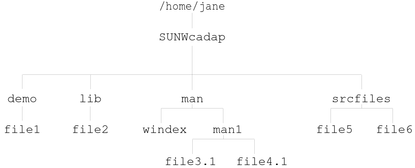| Skip Navigation Links | |
| Exit Print View | |

|
Application Packaging Developer's Guide Oracle Solaris 11 Express 11/10 |
| Skip Navigation Links | |
| Exit Print View | |

|
Application Packaging Developer's Guide Oracle Solaris 11 Express 11/10 |
The Process of Building a Package (Task Map)
General Rules on Using Environment Variables
Package Environment Variables Summary
Defining a Package Abbreviation (PKG)
Specifying a Package Architecture (ARCH)
Specifying a Package Instruction Set Architecture (SUNW_ISA)
Specifying a Package Version (VERSION)
Defining a Package Name (NAME)
Defining a Package Category (CATEGORY)
Collectively Relocatable Objects
Individually Relocatable Objects
A Brief Word on an Object's Source and Destination Locations
Creating a prototype File From Scratch
Example--Creating a prototype File With the pkgproto Command
Fine-Tuning a prototype File Created With the pkgproto Command
Creating Object Entries With File Types v, e, x, and i
Using Multiple Class Definitions
Example--Fine-Tuning a prototype File Created Using the pkgproto Command
Adding Functionality to a prototype File
Defining Additional Objects to Be Created at Install Time
Creating Links at Install Time
Distributing Packages Over Multiple Volumes
Setting Default Values for the mode, owner, and group Fields
Providing a Search Path for the pkgmk Command
How to Create a prototype File by Using the pkgproto Command
Using the Simplest pkgmk Command
3. Enhancing the Functionality of a Package (Tasks)
4. Verifying and Transferring a Package
5. Case Studies of Package Creation
Organize your package objects in a hierarchical directory structure that mimics the structure that the package objects will have on the target system after installation. If you do this step before you create a prototype file, you can save yourself some time and effort when creating that file.
For help in completing this step, see Considerations Before Building a Package.
You can create this directory anywhere on your system and name it anything you like. The examples in this chapter assume that a package directory has the same name as the package abbreviation.
$ cd /home/jane $ mkdir SUNWcadap
For example, the CAD application package, SUNWcadap, requires the following directory structure.

This example assumes that the example pkginfo file from How to Create a pkginfo File was created in Jane's home directory.
$ cd /home/jane $ mkdir InfoFiles $ mv pkginfo InfoFiles
See How to Create a prototype File by Using the pkgproto Command.